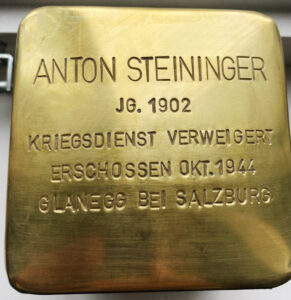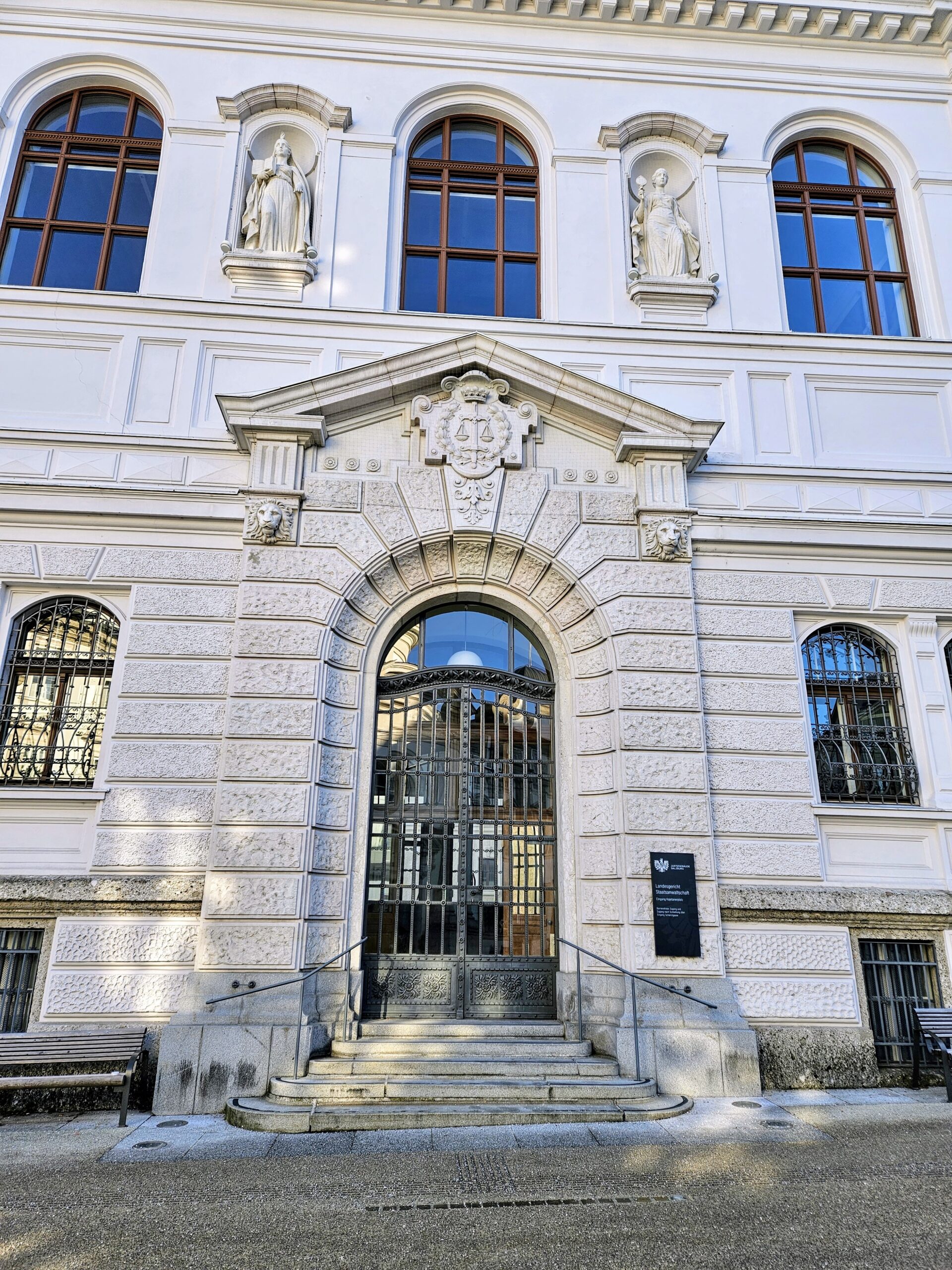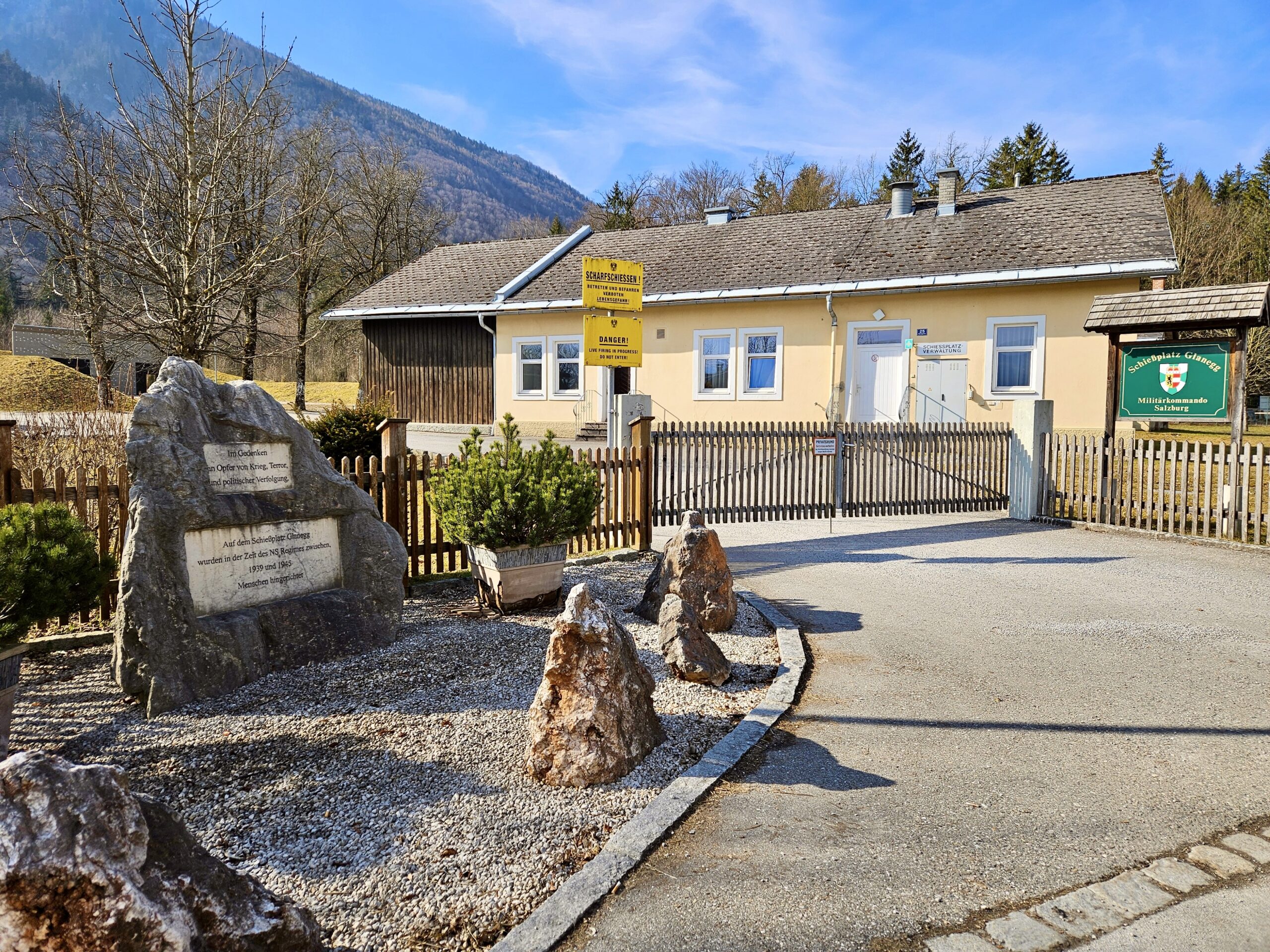Anton STEININGER, born on March 4, 1902 in Vienna, was a child of the unmarried unskilled worker Juliana Steininger. Her son Anton also had no learned profession. He also left no autobiographical testimonies.
In any case, it is documented that Anton STEININGER was employed as a laborer at the power plants in the Stubach Valley and had to enlist in the German Wehrmacht in the war year 1941.
In August 1942 he had his first home leave, which he could spend with his beloved in the Stubach valley.
In the Pinzgau mountains Anton STEININGER decided to escape – to desert. He thus refused military service and front-line service, his participation in the war of extermination.
Thanks to his escape helpers, he managed to hide in the mountains for almost two years. He was caught in May 1944, managed to escape again, but fell into the clutches of the Gestapo and the court martial in Salzburg on August 17, 1944.
In the Stubach Valley, his partner Kreszentia Gruber missed him. After the end of the war, she hoped to learn more about his whereabouts. In August 1947, she apparently turned to the Red Cross for help, as a »search notice« appeared in the Salzburg press:
The relatives of Anton Steininger, born March 4, 1902, allegedly in Vienna, are asked to report to the Red Cross Tracing Office, Salzburg, Paris-Lodron-Strasse 8a, 1st floor, door 1.
Even his mother, who lived in Vienna, could not know anything more. It is questionable whether she ever received a death notice. There was a profound silence, especially about »desertion«, desertion or refusal of military service during the war of extermination.
It was not until the 1990s that the public learned from the documentation Resistance and Persecution in Salzburg 1934-1945 that Anton STEININGER was sentenced to death for »desertion« by the court martial of Division 418 on September 7, 1944.
The death sentence was not imposed anywhere, but in the Salzburg court building:
In the name of the German people!
This phrase obscures the view of the responsibility of concrete persons of wartime justice: Dr. Ferdinand Voggenberger as prosecutor and Dr. Wilhelm Krepper as judge. Both were Austrian jurists – blood judges in Salzburg.
Furthermore, the 1991 documentation neither asks nor says where the execution of 42-year-old Anton STEININGER took place: either at the military firing range in Glanegg, a village in the municipality of Grödig, or elsewhere?
So far, no accurate death record could be found in the municipal office of Grödig.
However, research by the Salzburg City Archives revealed that the body of Anton STEININGER was buried in the second half of October 1944 in the municipal cemetery of the city of Salzburg: »Grödig is noted as the place of death« (according to the cemetery administration).
There is no doubt – despite the »war death notice« which cannot be found in Grödig – that Anton STEININGER was executed on the military firing range in Glanegg near Salzburg.
It is also worth noting that Anton STEININGER had a hitherto unknown escape helper: Marianne Praschberger from Uttendorf, who was sentenced to two years in prison in December 1944 for »aiding and abetting desertion« and »anti-state sentiments«.
Marianne Praschberger survived the terror years. However, her applications for victim welfare and compensation for imprisonment were rejected by the Office of the Salzburg Provincial Government. Women escape helpers were not considered »victims of the struggle for a free, democratic Austria« any more than deserters were.
It took decades until the deserters of the German Wehrmacht were rehabilitated: with the Repeal and Rehabilitation Act of the Austrian National Council, which came into force on December 1, 2009.
Sources
- Austrian State Archives and Documentation Center of the Austrian Resistance (death sentence St. P. L. I 365/44 Anton Steininger).
- Resistance and Persecution in Salzburg 1934-1945, vol. 1, Vienna 1991, pp. 574f.
- Salzburg Provincial Archives (Victim Welfare Files)
- Search notice of the Red Cross (Salzburger Nachrichten, Salzburger Tagblatt and Salzburger Volkszeitung of 20. 8. 1947)
- Salzburg City Archives (communication dated 2. 2. 2022)
- Municipal office Grödig (communication of 13. 4. 2022)
Translation: DeepL
Stumbling Stone
Laid 27.09.2022 at Salzburg, Kajetanerplatz 2

 Memorial plaque at the Salzburg regional court
Memorial plaque at the Salzburg regional courtPhoto: Gert Kerschbaumer

 The symbol of Nazi civil and military justice: executioner's sword with party eagle and swastika
The symbol of Nazi civil and military justice: executioner's sword with party eagle and swastika
 Death sentence against Anton Steininger on Sept. 7, 1944 in Salzburg - Prosecutor Dr. Ferdinand Voggenberger, Judge Dr. Wilhelm Krepper
Death sentence against Anton Steininger on Sept. 7, 1944 in Salzburg - Prosecutor Dr. Ferdinand Voggenberger, Judge Dr. Wilhelm Krepper
 Photo: Gert Kerschbaumer
Photo: Gert Kerschbaumer
 Memorial to the victims of the Salzburg courts martial in Glanegg (erected on 30 September 2011 on the initiative of Governor Gabi Burgstaller)
Memorial to the victims of the Salzburg courts martial in Glanegg (erected on 30 September 2011 on the initiative of Governor Gabi Burgstaller)Photo: Gert Kerschbaumer
